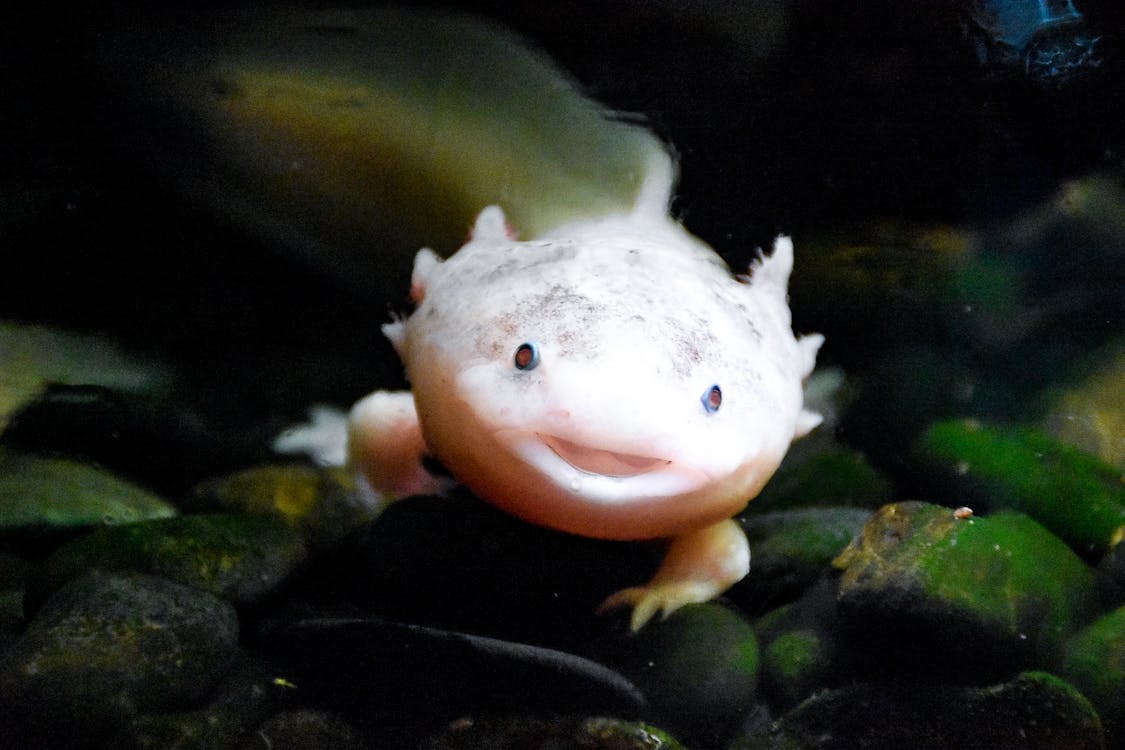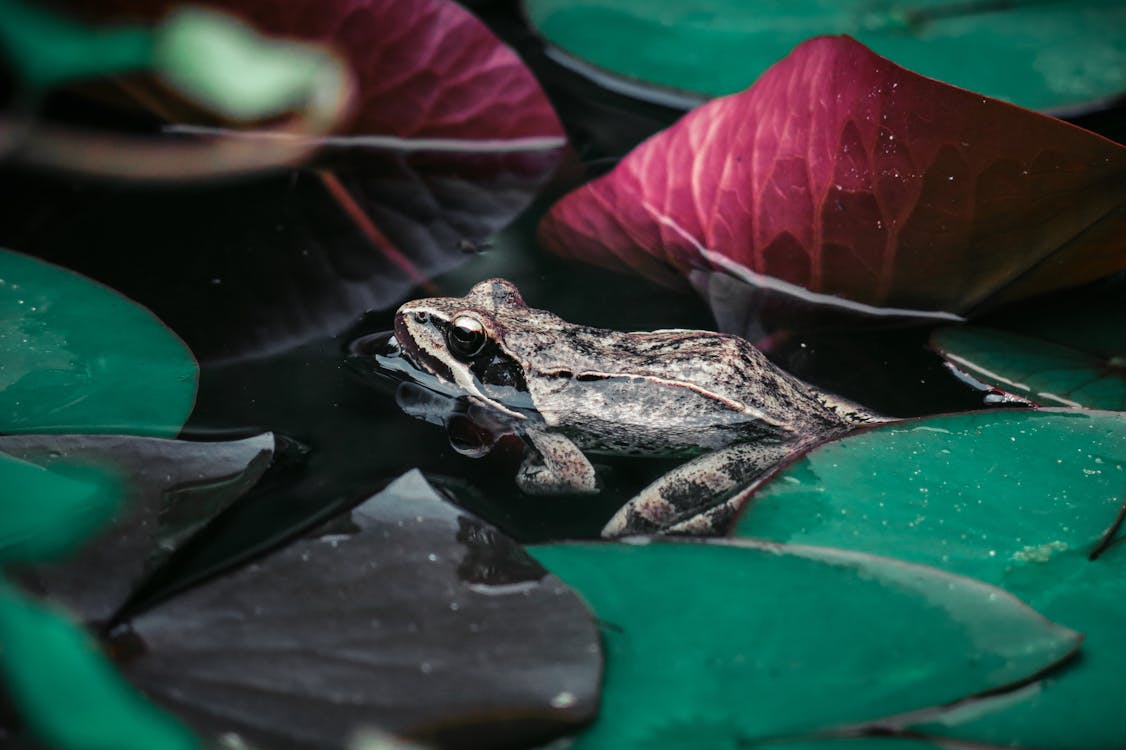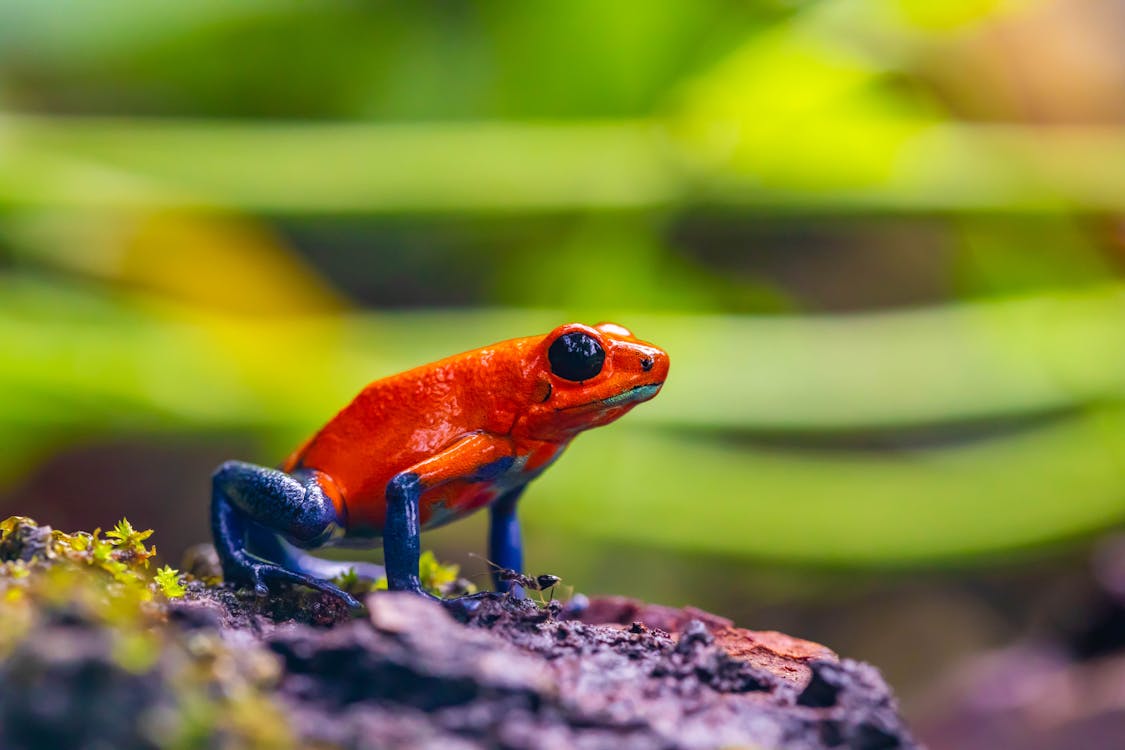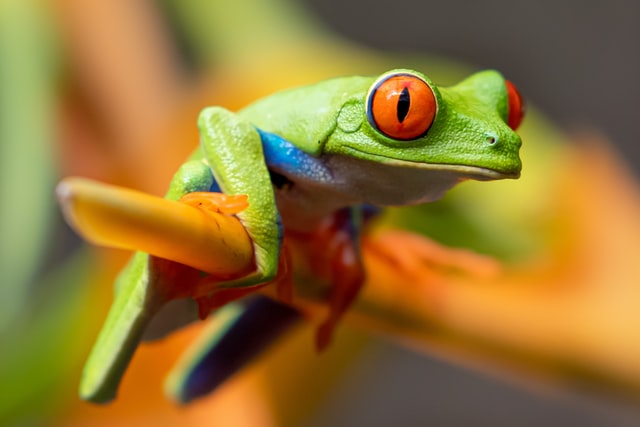Amphibians may not be the most popular group of animals, but those who do love them will tell you how unique, charming, and fascinating they are. There are currently more than 5,700 species of amphibians that can be found on every continent except Antarctica, in lakes, swamps, ponds, rivers, and marshes around the world. In this article we will show you ten amazing amphibians that you should definitely meet!
Axolotl
Contents

This adorable animal was once endangered, but has since made a come back. While it only lives in one lake in Mexico City, it continues to be a national symbol for hope and regeneration. It is also known as Mexican Walking Fish because of its ability to walk on land.
Indian bull frog (Rana tigrina)
Found in Southern India, these amphibians have a bright orange belly and yellow-green back. They are commonly known as Indian bull frogs because of their large size and strong breeding call. Though they are one of India’s most common frogs, they are declining at an alarming rate due to habitat loss, pollution and water availability.
Argentine horned frog (Ceratophrys ornata)

The prettiest and most interesting member of its species, Argentine horned frogs are a favorite for many amphibian enthusiasts. With vibrant colors, sturdy claws and a characteristic pair of horns on their heads, it’s no wonder that these adorable creatures are considered one of the most beautiful amphibians in existence.
Green tree frog (Hyla cinerea)
Commonly found throughout Europe, Africa and Asia, the green tree frog (Hyla cinerea) is a medium-sized tree frog that grows to about 1.5 inches long as adults. Adult frogs are bright green in color and have dark patches around their eyes. Although they’re not poisonous, these beautiful amphibians secrete a sticky substance from their skin when threatened by predators.
Mudskipper (Periophthalmus sp.)

The mudskipper is like a fish out of water – except that it’s actually better at life than most land-dwelling humans. This amphibian can survive in both fresh and saltwater, and is found primarily in mangrove swamps, tropical estuaries, tidal creeks and intertidal zones. It’s a small guy – typically measuring less than 10 inches long – but what it lacks in size it makes up for with cuteness.
Eastern Newt
The eastern newt (Notophthalmus viridescens) is a North American species of salamander. It is usually 2 to 3 inches long, has an olive-green back and tail, yellow belly, small legs, and red under its chin. Like all newts, it has three toes on each hind foot and four toes on each forefoot. The male eastern newt’s cloaca (vent) is orange in color.
Fire Belly Newt

Found in Georgia, it is a species of amphibian that gets its name from its red-tinted skin. It can easily be found on trees and rocks in most parts of North America. Its average length is around 6 to 8 centimeters long with males being generally larger than females. In captivity, Fire Belly Newts live an average of 12 years. They feed on various insects and invertebrates but can also ingest other small amphibians and small fish.
Surinam toad (Pipa pipa)
The Surinam toad is a small, slate-gray species that has bright yellow legs. This amphibian has a flattened body and large head with small eyes and a wide mouth. The Surinam toad can be found in northeastern South America, as well as parts of Central America and northern Brazil. While it’s mostly terrestrial, it does tend to live near water. The species spends most of its time hiding under leaves or among grasses, so rarely are these amphibians seen by humans.
Darwin’s frog (Rhinoderma darwinii)

Darwin’s frog is one of five living species within its genus, Rhinoderma. It is native to Chile and Argentina. Measuring 0.7–1 in (18–25 mm) in length, it has a distinctive black-and-white banded appearance on its head and legs.
Green eyed tree frog (Litoria caerulea)
It is found in eastern Australia and on some of the islands off its coast. The green eyed tree frog has a snout-to-vent length of between 45mm and 60mm, while females tend to be slightly larger than males. Green tree frogs have bright emerald green eyes (hence their name) which is why they are occasionally known as jewel eyed tree frogs. Their colouration varies from browns and greens to bright yellows, reds and blues.



GIPHY App Key not set. Please check settings